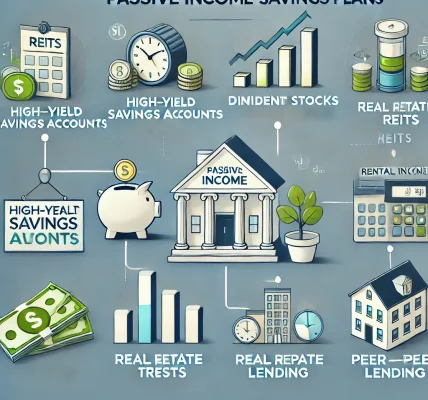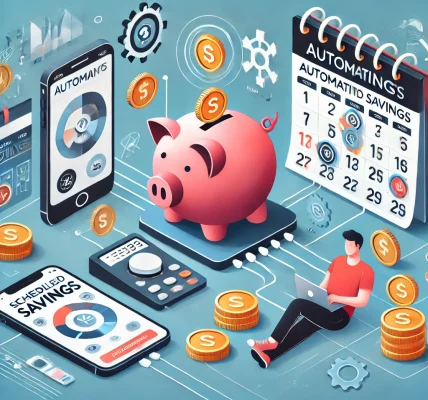Inflation is a major economic factor that can erode the purchasing power of your money over time. As prices rise, the value of your savings decreases unless you take action. Creating a saving plan that adapts to inflation is essential for maintaining the value of your money and achieving your long-term financial goals.
In this blog, we’ll discuss how inflation impacts your savings and provide you with actionable strategies for developing a saving plan that keeps pace with inflation. By taking proactive steps now, you can ensure that your money continues to grow, regardless of rising prices.
What Is Inflation and Why Does It Matter?
Inflation refers to the rate at which the general price level of goods and services rises, leading to a decrease in the purchasing power of money. A small amount of inflation is normal in an economy, but when it increases significantly, it can impact your finances, especially if your savings aren’t growing fast enough to keep up.
For example, if you have $10,000 saved and inflation is at 3%, the purchasing power of that $10,000 will decrease by $300 over the course of a year. To ensure your savings don’t lose value, it’s crucial to adjust your saving strategy in line with inflation rates.
How Inflation Affects Your Savings
- Decreased Purchasing Power: As inflation rises, the same amount of money buys fewer goods and services. This means that without adapting your savings plan, the value of your savings will be diminished over time.
- Lower Interest Rates: Traditional savings accounts often offer interest rates that are lower than inflation rates, meaning you’ll effectively lose money if you only keep your funds in a savings account.
- Increased Cost of Living: The rising cost of goods like food, gas, and healthcare can leave you with less disposable income to save, making it harder to meet your financial goals.
Steps to Create a Saving Plan That Adapts to Inflation
Creating a flexible, inflation-proof saving plan requires understanding inflation and adjusting your financial strategies accordingly. Here are some steps you can take:
1. Increase Your Savings Rate
As inflation increases, the amount you need to save in order to maintain your purchasing power will also rise. Increasing your savings rate is an essential first step to combat inflation. You might need to save a larger portion of your income, especially if prices are rising faster than expected.
How to increase your savings rate:
- Set up automatic transfers to your savings account every payday.
- Review your budget regularly and look for areas where you can cut back on unnecessary spending.
- Aim for at least 20% of your income to go toward savings, if possible.
2. Invest in Assets That Outpace Inflation
One of the best ways to protect your savings from inflation is by investing in assets that typically outperform inflation over the long term. Assets like stocks, real estate, and inflation-protected securities can offer returns that outpace inflation, allowing your savings to grow even in an inflationary environment.
Investment options to consider:
- Stocks and Mutual Funds: Historically, the stock market has provided an average return of 7% to 10% per year, which can easily outpace inflation.
- Real Estate: Property values tend to rise with inflation, making real estate a solid investment for long-term growth.
- Treasury Inflation-Protected Securities (TIPS): These are government bonds that adjust their principal value with inflation, ensuring that you earn a return that keeps pace with rising prices.
3. Opt for High-Interest Saving Accounts
While regular savings accounts may not keep up with inflation, high-interest savings accounts or certificates of deposit (CDs) can offer higher returns, helping your savings grow faster. Many online banks offer high-interest accounts with rates that are more competitive than traditional banks, making them a viable option for protecting against inflation.
4. Diversify Your Savings Portfolio
By diversifying your savings across multiple types of accounts and investments, you can spread the risk and ensure that your funds are working for you, even in inflationary times. Consider a mix of low-risk and high-return investment options to balance safety with growth.
Types of diversification:
- Emergency fund: Keep a portion of your savings in a liquid emergency fund to cover unexpected expenses.
- Long-term investments: Invest in a diversified portfolio of stocks, bonds, and real estate for long-term growth.
- Inflation-protected securities: Add inflation-protected assets to your portfolio to ensure your savings keep up with rising prices.
5. Adjust Your Goals Regularly
As inflation rates change, so should your saving goals. Regularly evaluate your goals and adjust them to account for rising prices. For instance, if inflation causes the cost of living to increase, you may need to raise the amount you’re saving for future goals like buying a home or funding your retirement.
How to adjust your goals:
- Revisit your savings goals annually.
- Factor in inflation when setting future financial targets (e.g., increasing retirement savings by 3% to 5% annually to counteract inflation).
- Use budgeting and financial planning tools to track your progress and make adjustments as needed.
6. Review and Rebalance Your Investments
Your investments should be reviewed periodically to ensure they are in line with your financial goals and that they continue to provide returns that beat inflation. Rebalancing your portfolio helps to manage risk and ensure that you are on track to achieve long-term growth.
When to rebalance:
- After significant market changes or when inflation rates fluctuate.
- Annually or semi-annually as part of your regular financial review.
Conclusion: Protect Your Savings from Inflation
Inflation can significantly affect the value of your savings, but with the right strategies in place, you can create a saving plan that adapts to inflation and helps you protect your wealth. Increasing your savings rate, investing in assets that outpace inflation, diversifying your portfolio, and regularly reviewing your goals are key steps to ensuring that your money works for you, even in times of inflation.




